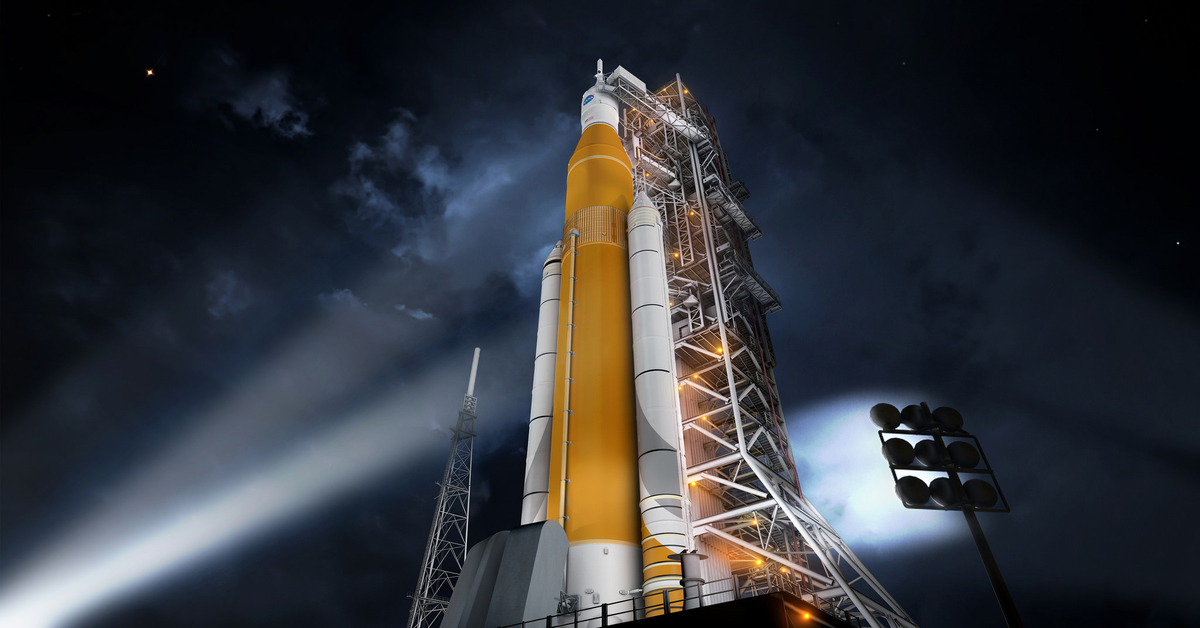Saying that 2021 was a huge year for space exploration is clearly an understatement. The year 2021 will probably go down in history as a turning point when space tourism takes flight, sending ordinary citizens to experience the weightlessness of zero-gravity.
From NASA landing its fifth rover on the Red Planet to seek out Martian life, to the first powered and controlled flight on another planet, and the epic launch of the long-awaited James Webb Space Telescope, 2021 was filled with events that made space researchers and astronomy geeks alike revel with wonder and elation.
2021 also saw Western Australia joining the space race when the first WA-grown spacecraft, Binar-1, was sent into orbit, fuelling the Australian government’s Moon-to-Mars program.
But for all the achievements of 2021, 2022 could hold just as much promise, if not more.
We like big rockets and we cannot lie.
Keep an eye out for two behemoth rockets – each more powerful than the Saturn V rocket that launched humankind into space and onto the Moon – as they get primed for action in 2022. The rockets are part of NASA’s Artemis program, which hopes to return astronauts to the Moon by 2025.
The first one is NASA’s Space Launch System (SLS) rocket. It stands taller than the Statue of Liberty at almost 100 metres (322 feet) and is capable of producing 39 meganewtons (8.8 million pounds) of thrust – 15% more than that of Saturn V. Slated for a February launch, SLS will carry an unmanned Orion capsule (designed to carry four to six astronauts when fully operational) on a trajectory that will enter a highly elliptical orbit around the Moon. A successful mission will be followed by a crewed trip around the moon in 2024 and a lunar landing in 2025 – 53 years since the last crewed Moon mission.
Unlike the SLS, which would ditch its massive booster stage into the ocean post-launch, the second rocket is fully reusable – both the spacecraft and booster stage. After placing the Starship spacecraft into orbit, SpaceX’s Super Heavy booster would head back towards its launchpad where it would be elegantly clenched by a pair of large mechanical arms extended like chopsticks. Starship’s overarching goal is to be able to transport enough tonnage to the Moon and Mars, ultimately leading to self-sustaining bases on both planets.
Avoiding Armageddon.
Asteroids are also on NASA’s watch list. To test an anti-asteroid defence system for Earth, the double asteroid redirection test (DART) spacecraft, launched last year, will crash into the moonlet Dimorphos in September.
Weighing about 650 kilograms (1,433 pounds), the spacecraft is in a collision course with the asteroid at 24,000 kilometres per hour (15,000 miles per hour), in an attempt to change the orbit of Dimorphos. A successful pilot project would further encourage NASA and other space agencies to develop spacecraft that could deflect larger asteroids heading towards Earth – and so avoid an Armageddon-esque impact.

DART mission timeline. Photo credits: John Hopkins University
ExoMars Mission.
The hunt for Martian life will take a step further this year with the launch of the joint European-Russian ExoMars mission, which will send UK-assembled rover “Rosalind Franklin” to the Red Planet. Scheduled for launch in late September 2022, the rover will arrive at Mars in June 2023 after a nine-month voyage.
Rosalind Franklin – named after the eponymous British chemist and DNA pioneer – will probe the Martian surface in search of evidence of past life, collecting subsurface samples with a drill and depositing them in its Analytical Laboratory Drawer. Then, its suite of scientific instruments will analyse the soil samples for biosignatures. The mission will be the first to combine surface mobility with the analysis of deep subsurface soil (approx. two metres or 6.5 feet).

Artist’s illustration of the Rosalind Franklin Mars rover. Photo credits: ESA
And, of course, among this year’s many intergalactic ventures and experiments, the James Webb Space Telescope – currently experiencing its “29 days on the edge” – will be ready to search for the “first light”. This will bring astronomers closer to the Big Bang than ever before, and we’ll get to have new, mesmerising desktop wallpapers of the Universe!




































